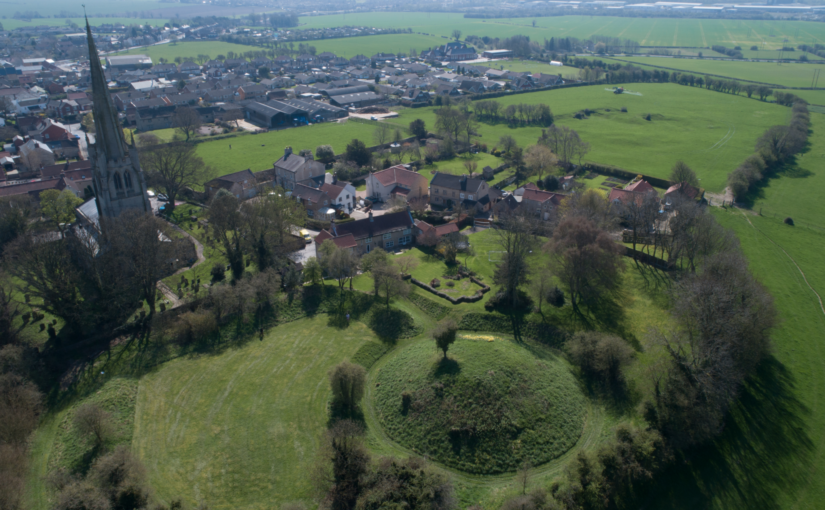Between 2018-2021, the Castle Studies Trust awarded Dr Duncan Wright three small grants to research the castle of Laughton-en-le-Morthen. The aim was to develop an innovative new research methodology to understand the near wholesale replacement of existing lords with incoming Norman tenants-in-chief physically showed itself post the Norman Conquest. Here Duncan explains what that has helped lead to.
In October 2021 the Arts and Humanities Research Council (AHRC) awarded Dr Duncan Wright (Newcastle University) an Early Career Research Grant of £200,000 in support of a new archaeological research project.
Subscribe to our quarterly newsletter
Entitled ‘Where Power Lies’, the project will undertake the first systematic examination of the physical evidence for elite centres in the landscape of medieval England between c. 800-1200AD. Many of these high-status places were developed as castles, and the research aims to identify the motivations behind choosing to build a castle at an existing lordly centre, when a site could equally be perpetuated as a manor house or else abandoned altogether.
The success of Duncan’s AHRC bid is partly thanks to the support of the Castle Studies Trust, who funded his research at Laughton en le Morthen (South Yorkshire) with three separate grant awards totalling almost £5000. The work at Laughton, which comprised geophysical and topographic survey, targeted excavation, and the commission of 3D reconstructions, not only helped reveal the complex history of the site but also acted as an important pilot and proof of concept for the new project. Indeed, Where Power Lies hopes to emulate the success of the research at Laughton, and will include some of the same survey techniques, but it will also scale up the focus to look at the national distribution of aristocratic centres with evidence for investment in both church and residential components.

After modelling the national picture, the Where Power Lies team will investigate a carefully selected sample of case study sites, which will be subject to topographic, geophysical, and standing building surveys. These investigations will allow us to reconstruct the biography of the case study locations in detail, and to explore how the character and expression of elite power invested in their residential and ecclesiastical complexes evolved over time. Working with the British Museum’s Portable Antiquities Scheme as an official project partner, the research will also produce a new profile of the artefacts of the aristocrats who built and occupied these sites.
By undertaking this work, Where Power lies will shift the focus beyond the relatively small corpus of excavated aristocratic sites of the period which continue to form the basis of our understanding. Instead, by embracing a range of digital technologies and non-intrusive survey methods, the projectwill create valuable new datasets at a number of scales. By generating this new information, the team will demonstrate how the transformation of power centres occurred on the ground, revealing whether castles integrated earlier components into remodelled layouts, or whether they caused greater destruction and a more fundamental schism with the past.

The team will be led by Duncan as Principal Investigator, who will be accompanied by Professor Oliver Creighton (Exeter University) as Co-Investigator, and a Research Associate who will join the team for the duration of the project. Duncan would like to take this opportunity to thank the Castle Studies Trust for their generous support of his research at Laughton en le Morthen, which strengthened the AHRC bid significantly. He hopes the results of Where Power Lies will prove of interest to everyone associated with the Trust.
Subscribe to our quarterly newsletter
You can read more about the Laughton-en-le-Morthen project here: https://castlestudiestrust.org/blog/2020/08/25/landscapes-of-lordship-searching-for-laughtons-anglo-saxon-elite/
